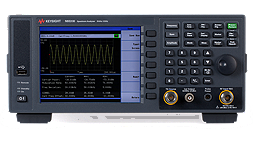A network analyzer is used to test the performance of wired or wireless networks by examining both transmitted and received signals. Unlike a signal analyzer, it performs advanced analysis of both transmitted and received signals. It is different from a signal analyzer because it performs a live, real-time, analysis of signals on the device under test. In contrast, a signal analyzer only analyzes data after the signal has been created.
A network analyzer can also perform analysis and detect problems that prevent a signal from reaching its destination. For example, it can detect issues with cabling, connectors, or faulty equipment. It can also help resolve RF spectrum and Wi-Fi issues, such as interference and signal loss.
A signal analyzer is used by engineers to identify problems in electronic circuits and to understand how a circuit is behaving; for example, monitoring electromagnetic interference between multiple signals or devices. This makes it useful for testing and debugging circuits that use radio signals or other powerful sources of potential interference.

















![[Bitte in “Koreanisch (Korea)” übersetzen:] Figure.1 N9042B UXA Signal Analyzer, 2 Hz to 110 GHz](https://store.cdn-krs.com/fileadmin/user_upload/Signal_Analyzers_0.png)





